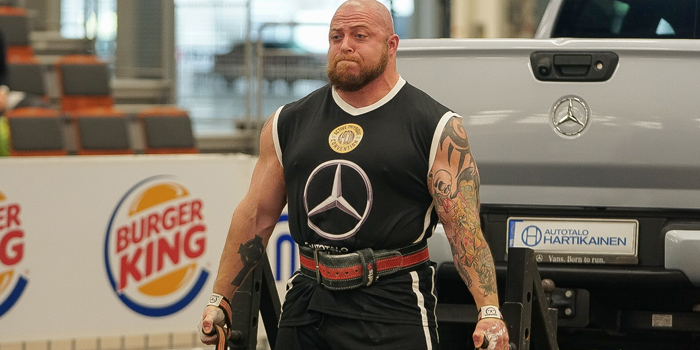
Like you, I’m a devourer of information, especially the quality content on elitefts.com. However, I’m also a tinkerer and like putting together my own program. I’ve seen a plethora of templates for conjugate-style training for strongman, but not a lot of guides for writing your own program. To remediate this dilemma of mine, I draw upon the wisdom of highly accomplished athletes and coaches, such as Dave Tate, Brian Alsruhe, Zach Gallman, Clint Darden, Andy Deck, and CJ Murphy. If you have no experience with conjugate, here is an amazing video where Dave Tate will take you through creating a program step by step. Whether you’re an experienced powerlifter trying to transfer your conjugate program into strongman, or a strongman trying out conjugate periodization for the first time, this article will be a great guide. In this article, the abbreviations ME, DE, and RM represent max effort, dynamic effort, and repetition method, respectively.
How to Schedule Training Your Implements
Right away, the glaring difference between structuring a powerlifting and a strongman program is the number of lifts. Westside Barbell focused their four main days a week around increasing your squat, bench, and deadlift. However, you’re going to have to find a way to structure, at a minimum, four events: possibly 10+ implements depending on the number of medleys in your upcoming contest! Your best bet is to keep your stationary events (presses, deadlifts, stone over bar for reps) plugged in as your main ME or DE work. Thankfully, the concept of rotating variations in ME allows you to train more than just one implement at a time. You can alternate between deadlift bars or the implements you use in overhead movements to get extra practice with heavy weights that are relevant to your diverse needs. How, then, should we structure our DE days? Traditionally, our DE builds explosiveness, but it also serves as technical work. This makes it necessary to start rotating our implements on our DE days as well.
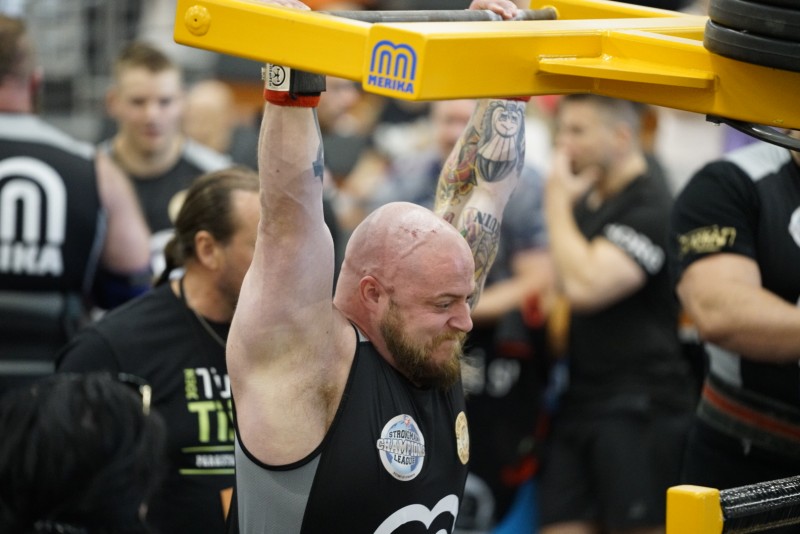
Modifications to Traditional ME and DE Upper for Strongman
Don’t feel the need to get too crazy. Putting in a maximum amount of effort is hardly a strange theme for strongman. Be conscious of your next contest if you have one, and use common sense. If my next contest is going to be a rep fest, I should probably dabble outside of 1RM territory with my main movements. Given that this is your upper-body day, should you dip into your posterior chain effort of cleaning your implement before your press? Brian Alsruhe says you need to do a balancing act.
“We definitely do take the clean out of a clean & press at times but we also practice like we play as much as we can. We always have to clean in competition so we do it often but if it is a high volume day or if you are coming off a rough event or deadlift day and your posterior chain is pissed, then that is where you go out of a rack just for self preservation, recovery and giving your CNS more of a break.”
C.J. Murphy has also had a lot of success with programming ME log or axle cleans if he knows that someone has a weakness in the clean. If you can’t clean it, you can’t press it!
If you’re trying to train DE upper but don’t understand how to prepare for an overhead press for a bench, Zach Gallman has some tips on how to use your accommodating resistance.
“I will use it on a strict overhead DE upper day. In a true push jerk, I would not since it is actually a catch and not a press. That’s really more about leg drive. On a push press, I usually prescribe higher percentages of a max, like 65-75%, since a push press is in and of itself accommodating resistance. You’re using your legs to drive the bar off the rack position and then following through with static strength at the top, so it is “adding” resistance at whatever point in the lift you initiate the press.”
The Strongman’s Nemesis, AKA the Bench Press
Bench press. The eternal debate of strongman. There’s a long-lasting love-and-hate relationship between the bench and the strongman that is seemingly dependent on how good he or she is at it. At the end of the day, relative to a powerlifter, a strongman needs to bench a lot less. However, it is still an invaluable tool for progressively overloading your delts and triceps, so all sorts of bench variations, especially the close grip and incline bench, can still be used as your ME work. However, this is also an opportunity to branch out from your traditional 1RM only. Given that you need to be adept at hitting reps and you’re also aiming to add some size, don’t be afraid to use a 5RM for your bench press training instead. Brian Alsruhe seemed to have the same train of thought:
“It doesn't make much sense for a strongman to do the bench press but a close grip bench or floor press does. Or we would swap out the barbell for an implement. So it could be an incline log bench press type of thing. However, I think variations of the bench are super useful just because you can overload the triceps with so much more weight on the bench than the OHP. Stronger triceps = stronger pressing whether than be on the bench or overhead, so I try to take its usefulness and discard what is not. That said, you would never see a standard ME bench day in a conjugate program I write.”
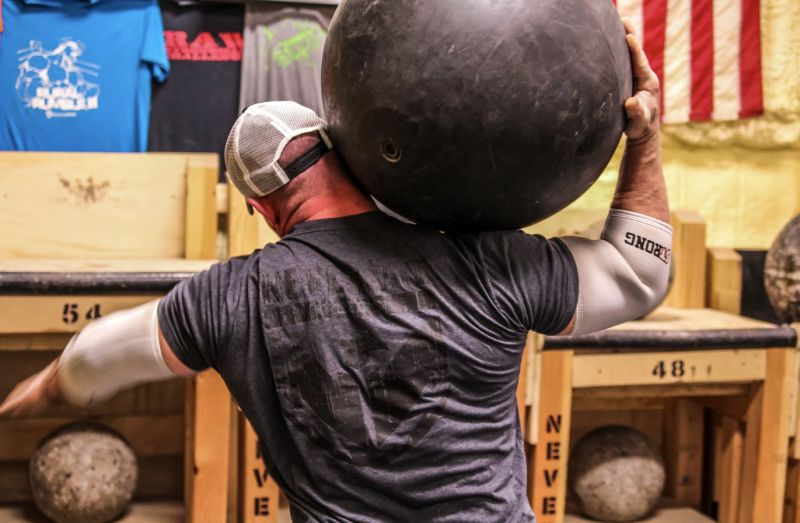
Modifications to Traditional ME and DE Lower for Strongman
Luckily, little modification is needed for the reps and sets of traditional DE and ME setups. It still builds lower body strength and power. As long as you focus on dialing in your deadlift technique on DE and strength in ME, you cannot go wrong. C.J. Murphy of Total Performance Systems prefers to use the power bar on the deadlift for all of his and his clients’ off-season training to build grip strength and power off of the floor. But he starts to cycle in the relevant specialty bar when it’s in an upcoming competition.
Squats for Those Who Do Not Need to Squat
Odds are that your only lower-body dominant static lifts in a strongman competition are a deadlift or implement over bar event. What do we do with our squats, then? Odds are that you still need them. They may not be a competition-specific event, but they’re going to have a strong influence on every single lift you perform. A strong squat, powerful legs, and a strong posterior chain will directly help your deadlift, your loading ability, and your ability to pick up a heavy weight and run with it. C.J. prioritizes straight weight squats, then added chain weight, then added band tension. The good news is that you can be flexible in your squat training. If your shoulders and elbow get beat up from low bar squats, then don’t feel the need to hammer low-bar squats! The yoke bar squat was practically designed for the strongman competitor where the camber puts the weight closer to the front of you to challenge your quads and your upper back’s ability to stay locked in. This is key to every odd implement, even those you need to press! However, front squats, hatfield squats, spider bar squats, BUFFALO BAR™ squats, zercher squats, goblet squats, and split squats all have their place in strongman. C.J. emphasizes front squats in his program because they will build up your rack position, quads, torso, and back strength, which are vital in every single event in strongman! Mix it up, and although you should never forget about the deadlift, similar to the bench, 1-5RMs in the squat will build much needed leg strength.
What To Do With Moving Events
The traditional rules of ME don’t transfer well to my upcoming yoke walk, and I can’t exactly apply accommodating resistance on a 40% yoke walk for DE. We then look to plug these in, in the RM slot. Most moving events benefit most from a submaximal approach to their training. Why is that? Because in every moving event, you are speed training. You aren’t scored on the amount of weight you can farmer’s walk five feet; you’re scored on how quickly you can move a predetermined weight for 30-200 feet. You don’t want to be training your ability to take sloppy, uneven steps with an extra 30 pounds. Rather, you want to be neurologically primed to pick up your contest weight and start flying. This makes it ideal to remain in this 60-80% range as prescribed for traditional RM. Play with these ranges to determine what you know will fit your upcoming contest best. If you know that this event is going to be very heavy for you, playing around at 80% will be more necessary. However, if you’re going to need a very quick time to win, train yourself to move very quickly!
How to Train for Medleys
“I’m looking at my next contest and my old conjugate template; how do I change a reverse banded four-board 1RM bench to help my ability to overhead press one circus dumbbell, log, and axle in 15 seconds?”
Similar to a moving event, your focus in training should be practicing good technique and quick transitions. Brian Alsruhe prefers to keep his ME and DE days very distinct from each other.
“I absolutely do train medleys all of the time but it would usually be after the speed work on my DE days. All of my DE days are about moving them as perfectly as possible and then being athletic and fast. Often times my joints are hurting too badly to run/jump and load big heavy things after my ME work so I keep it on my speed days.”
It is easy to miss the forest for the trees here. If you’ve practiced lifting heavy weights, you’re prepared to lift heavy weights. Don’t sweat hitting the exact competition weights in your medley practice. After you’ve done your main movements, plug your medley practice into your RM spot. If you’ve got the maximal strength and base hypertrophy built, you should be practicing your transitions more so than focusing on the weight. On the other hand, if the medley is coming up but you’re concerned about the weight for one of the events more than the others, don’t be afraid to get specific! There’s no point in spending all of your time drilling the circus dumbbell if you need to hit a 20-pound PR on your log press first! Switch between log-specific supplemental movements, but practice the medley because you may surprise yourself on the day of.
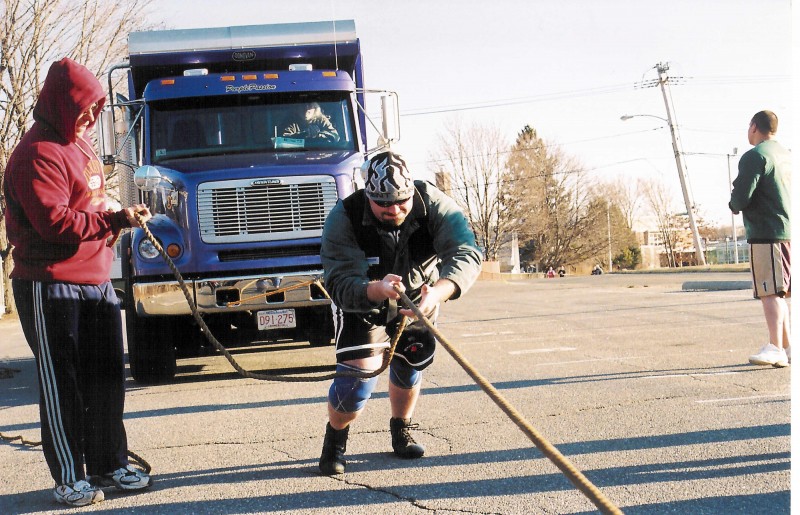
Olympic Lifting for Strongman
If you have a background in Olympic weightlifting and an affinity for it, you might not need to eliminate it. Zach Gallman has written a great article on this in the past, but I had him revisit and expand upon his ideas:
“If the person has a good skill level with the movements, then I would use them. It is a great way to develop power and learn how to transfer power from your legs into things like overhead. If they are not very coordinated or don’t have someone skilled to coach them, then I would suggest other ways to hit triple extension, like jumps, high pulls, etc. I usually categorize people into two categories... strong and slow, explosive but not strong. For strong slow people, incorporating Olympic lifts will help overcome some of that slowness. I see it a lot in strongman more so than, say, powerlifting. Things like atlas stones and overhead require a lot of explosive force. A good atlas stone loader will rely on their hips, while poor ones usually try to muscle it up with their backs.”
Sold on Olympic lifting but don’t know how to implement it? Zach continues to say:
“I would use them for lower DE days, with a much bigger focus on the clean because of how often we are in a rack position in strongman. The snatch can have a lot of carryover, but it becomes a risk vs. reward thing. It’s a complicated movement on one of the most vulnerable joints in the body. Also, you could incorporate jerks and split jerks if you have an overhead DE upper.”
Supplemental Movements for Strongman
Supplemental movements should be decided in the same way no matter what kind of athlete you are. Once you’ve identified your weak points, find a way to hammer them! Critically determine the weak point in your lift, and ruthlessly eliminate it! If your form breaks down in a certain area, hit that zone with perfect practice until you don’t break down anymore. This is somewhat different from your average powerlifting training, all moving events involve stabilizing weight on one leg at a time. Why do people start wobbling back and forth on a heavy yoke? Usually, it is from the inability to stabilize all that weight on one leg as you take each step. Team elitefts strongman and Doctor of Physical Therapy Andy Deck does a lot of unilateral leg work. Given that a lot of strongman is done unilaterally, whether you’re moving with heavy weights, split jerking, or pressing dumbbells, it’s important to keep in unilateral leg work and not be afraid to go heavy and get your legs strong.
Auxiliary Movements for Strongman
Auxiliary movements will be our opportunity to beef up our weak points without tearing up our joints. Hammer your delts and triceps a little bit more so that you’ve got something to flex when you go to press, and build up your torso and glutes to hold you tight through a deadlift. This is also a great way to get in more vertical and horizontal pulling, especially unilaterally. When you mostly use your upper body in two-arm pressing, it can be valuable to back away and to get strong more generally. Although these concepts seem straightforward, how do we treat bicep isolation? We know that bicep tears are common, and you can’t totally eliminate their involvement in many events, but what does that mean for us in the gym? Andy does lots of direct bicep work in the form of curls. He says when he cuts them out of his program, his shoulders may start to bother him, and his stone picks and log cleans start to feel weaker. Generally, he stays less than 10 reps but may back off if his elbows need a break.
Conclusion
After reading all of that, you’ve likely had a lot of questions answered, but possibly more have popped up! If you’re a little confused, no worries—these examples will lay things out in a more black-and-white manner to set yourself up to design your new conjugate program. Simply follow along and plug in lifts where they are appropriate, and keep referring back to this article. These are not exact percentages, sets, reps, exercise choices or progression schemes. They simply resemble what you may end up with after designing a program according to these principles. A huge thank you once again to Brian Alsruhe, Andy Deck, Zach Gallman, C.J. Murphy, Clint Darden, and Dave Tate for answering the questions and for sharing their vast intelligence and experience with me while I was writing this! I’ve also linked some more relevant materials at the bottom from some of the minds that were kind enough to answer questions for me.
Templates
DE Lower
DE Upper
ME Lower
ME Upper
Resources
Header image credit: @the_murph_project









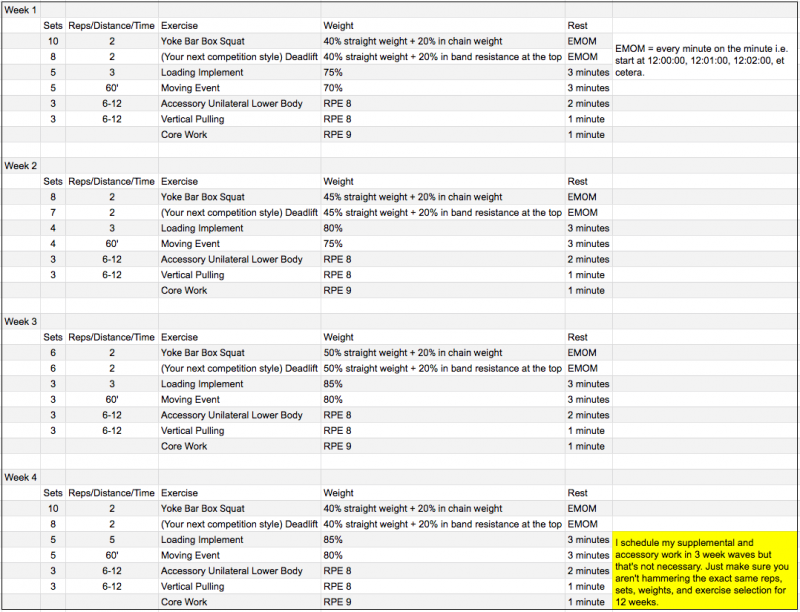
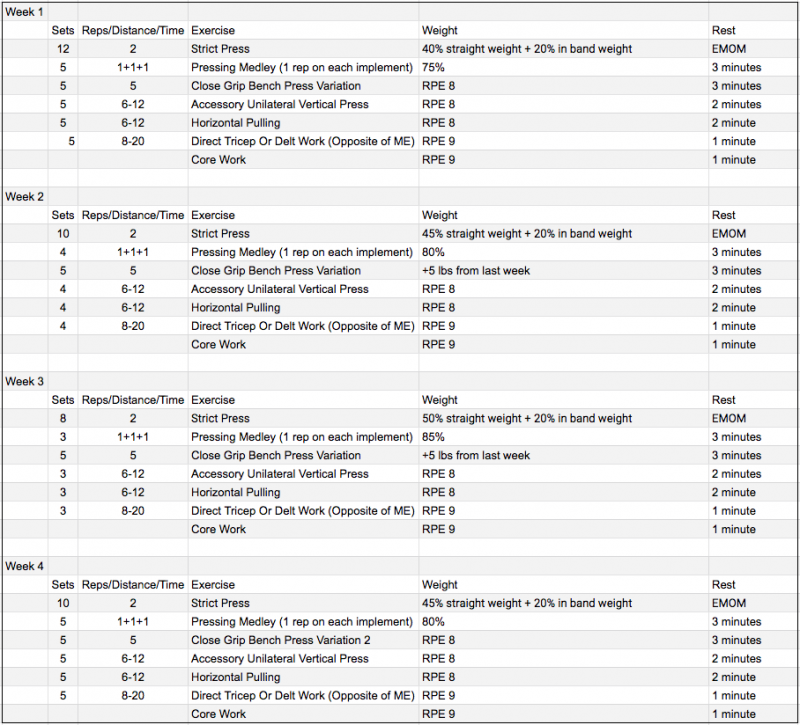
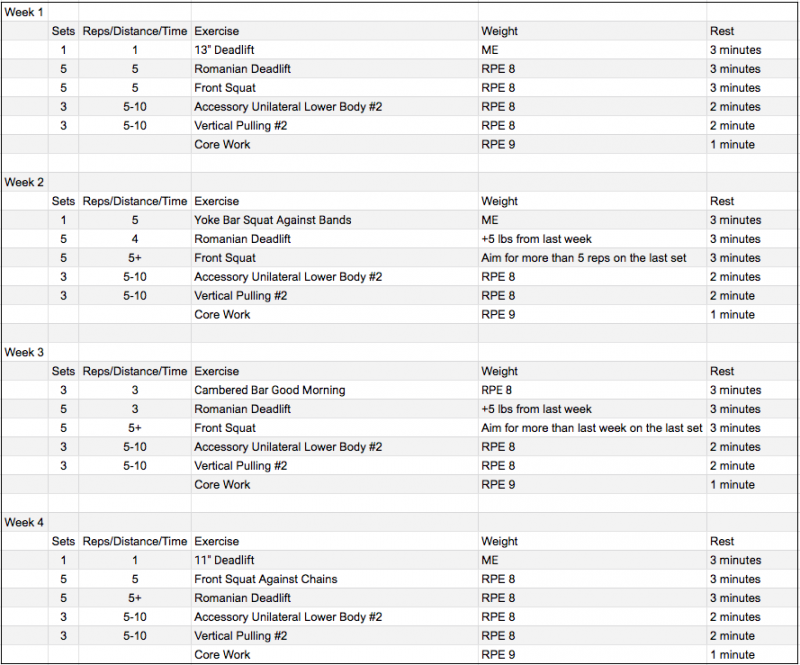
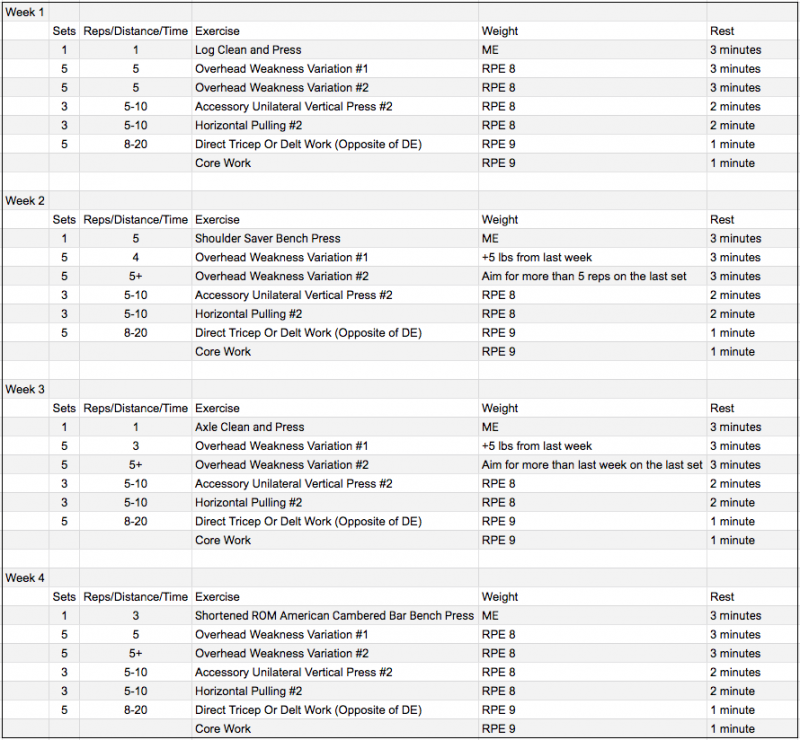
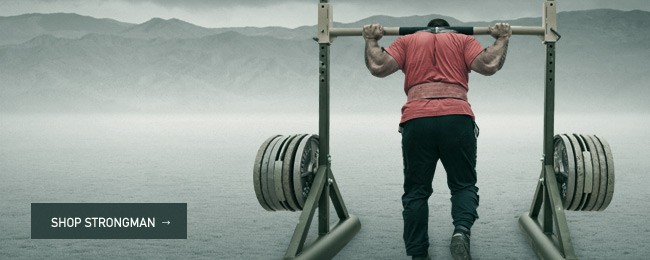
5 Comments